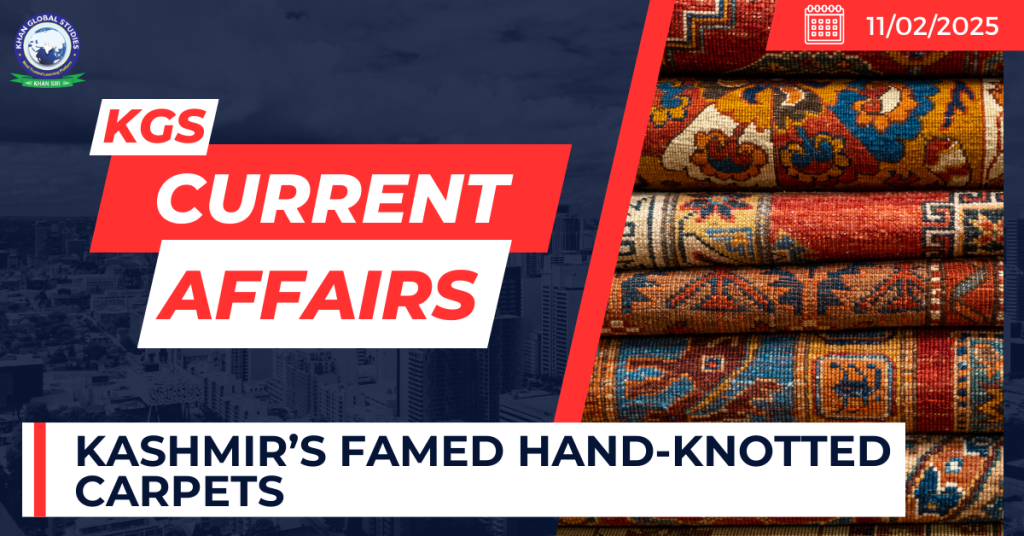Context:
Recently, The GI registry Chennai granted a new logo to preserve Kashmir’s famed hand-knotted carpets.

- The origin of Kashmir’s hand-knotted carpets, or “Kal baffi,” dates back to the 15th century.
- Sultan Zain-ul-Abidin brought carpet weavers from Persia and Central Asia to train locals.
- These carpets, made from 200 to 900 knots per square inch using wool and silk yarn, are considered among the finest in the world.
- The weaving loom uses two horizontal wooden beams, and short lengths of yarn are tied to create the carpet’s pile. Top of Form
- There are different types of knots and in Kashmir the Farsi baff and the Persian system known as Sehna, or Sinneh, knot is originally used.
- Kashmir uses the Farsi baff and Persian Sehna knots, with simple tools like a comb and scissors to tighten and trim the pile.
- The carpets feature motifs like Gulabdar (rose), Tree of Life, Gumm (maze), Bagdar (garden), All Over (floral design), Dabdar (geometric pattern), Lotus (purity), and Khatam Band (wood art-inspired).
- The carpets often include motifs like Hamdan, Ardabil, Kashan, Kirman, and Tabriz, inspired by Persian art.Bottom of Form
Kashmir’s seven crafts — including carpet, pashmina, sozni, kani shawl, walnut wood carving, khatamband, and papier mache — have been registered under the GI Act.

